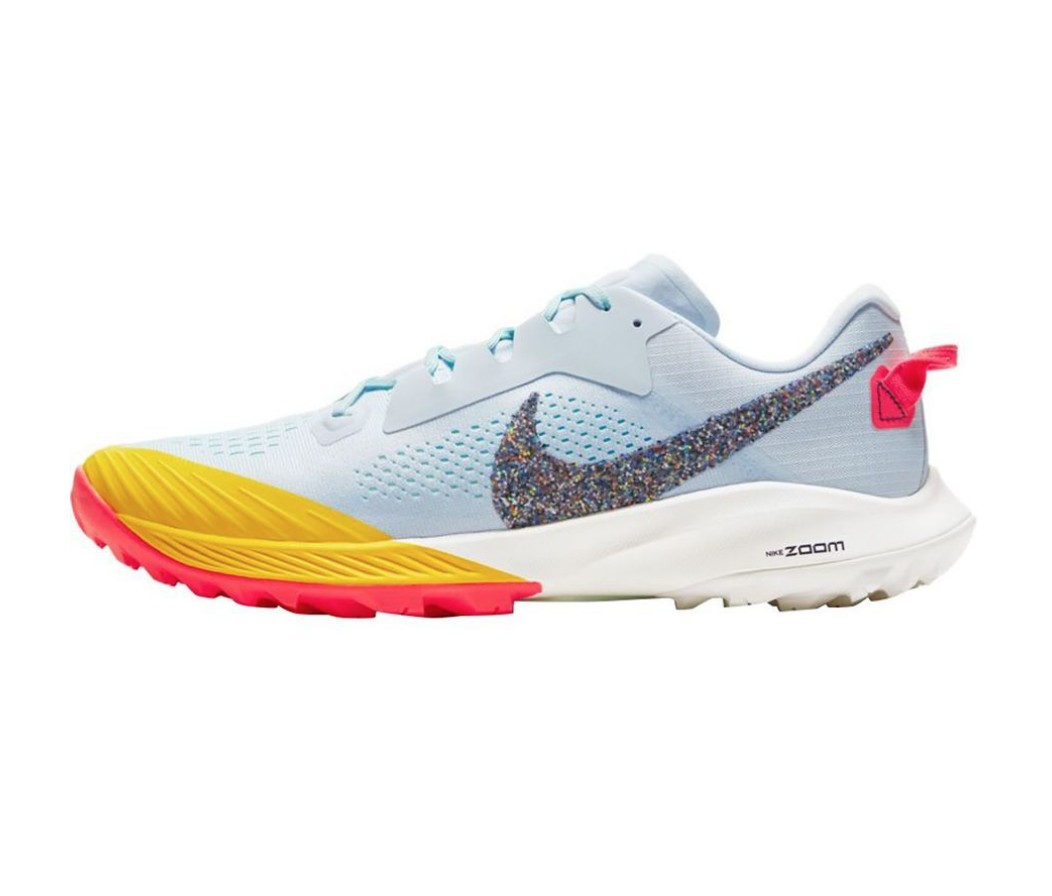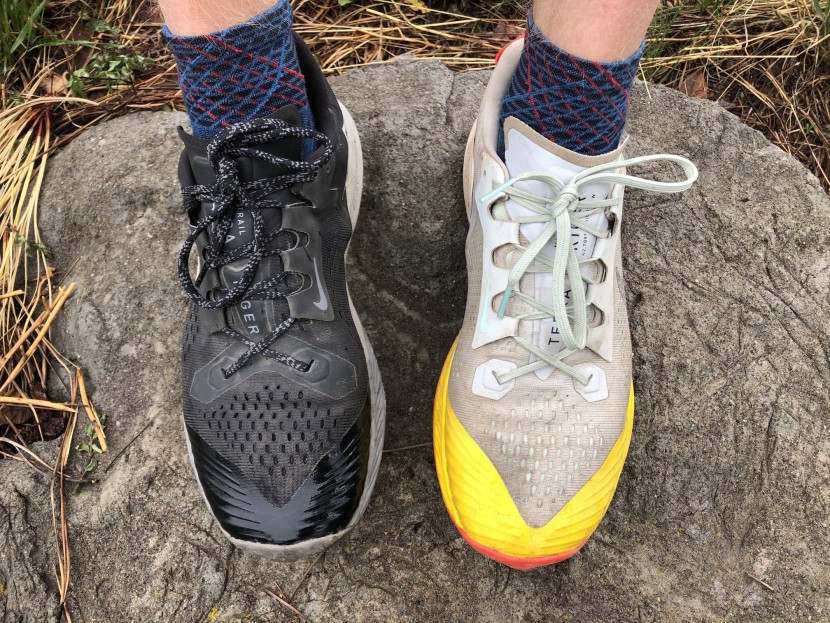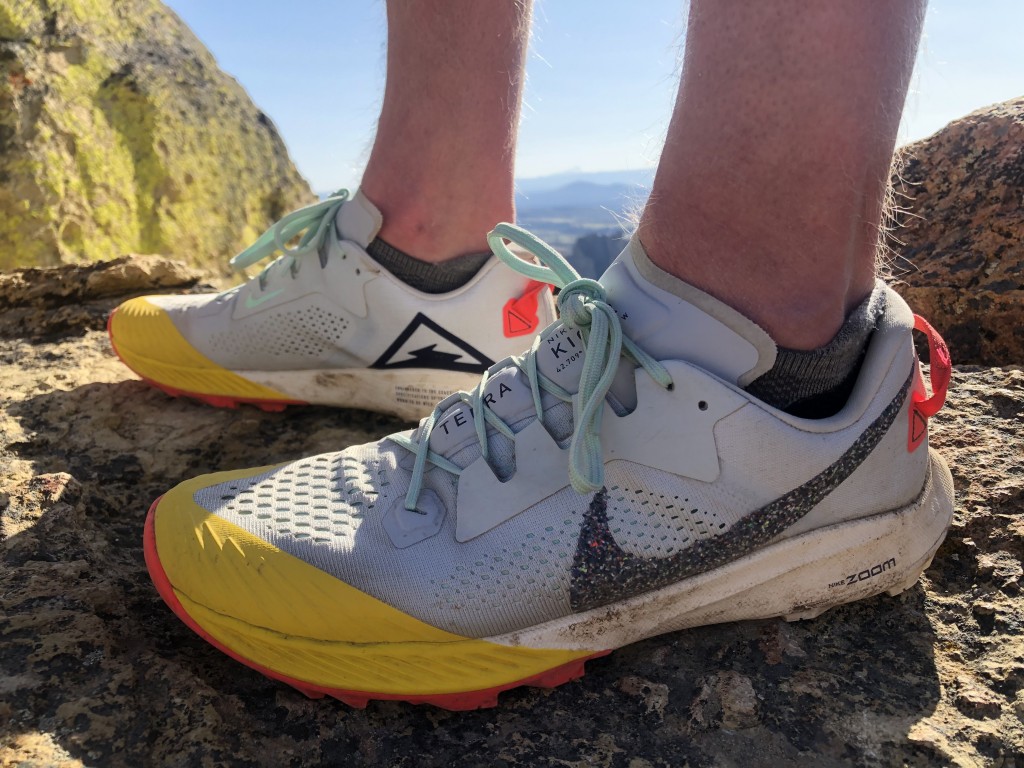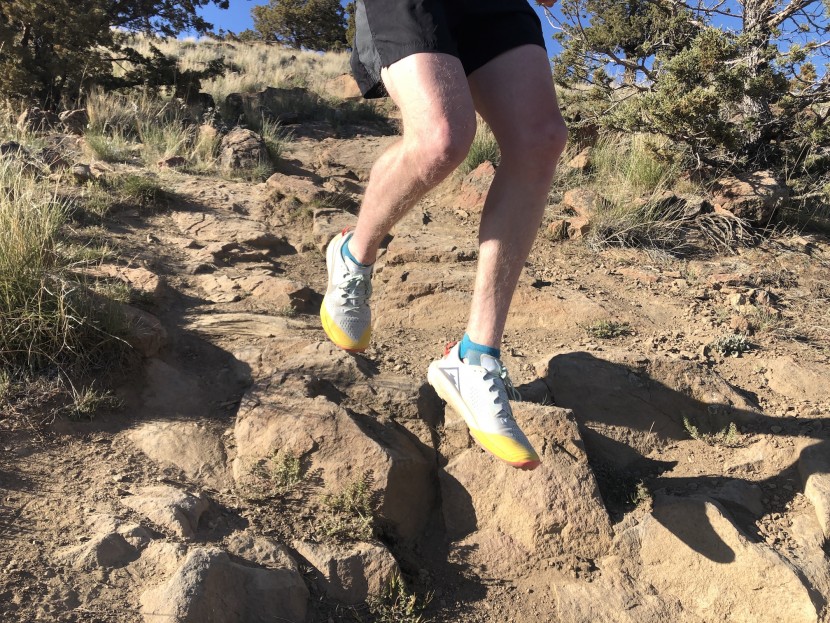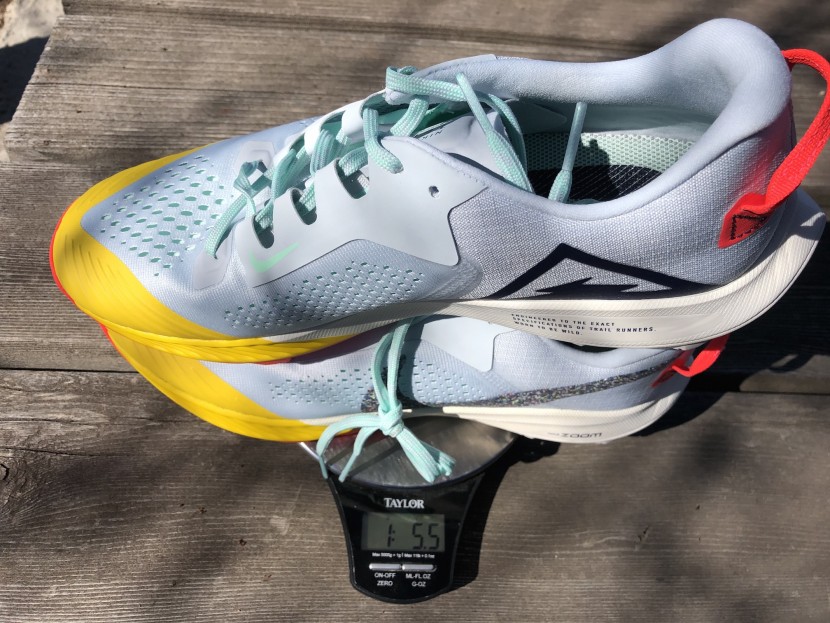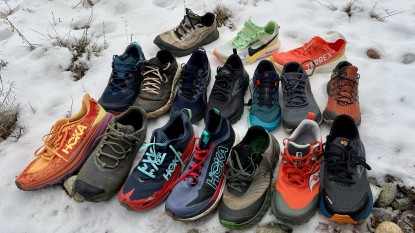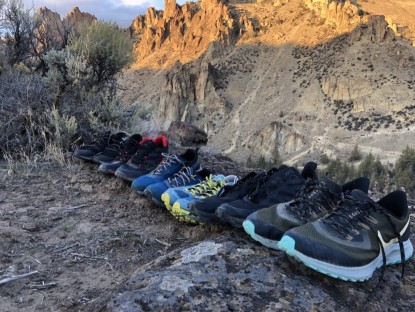Nike Air Zoom Terra Kiger 6 Review
Our Verdict
Our Analysis and Test Results
The Terra Kiger 6 is the highest performing of the three shoes in Nike's trail running shoe lineup, yet despite its low profile is an ideal shoe for all types of terrain and running styles. This shoe emphasizes sensitivity more than underfoot protection, yet still allows one to run over the roughest terrain. The ride on this shoe is light and springy, and a snug but comfortable fit aids in its fantastic responsiveness. Simply put, this shoe is a joy to wear, and is one that our testers find themselves reaching for again and again, day after day. Most lightweight trail runner's force one to make sacrifices or compromises in order to shed those extra few ounces, but the Kiger 6 is a notable exception to this rule.
Fans of this shoe will recall that it underwent a major revision between versions 4 and 5. Not so with the newest update: the 6 is virtually the same shoe as the 5. The only noticeable differences are found in the upper, which has a few superficial cosmetic changes. Nike says that the heel cup on the newest version is “woven,” and while we aren't certain what it is made of, we do notice that it is a bit softer and more pliable than the previous version, which was stiffer and caused some people issues.
Some people are reporting that the shoe is now a bit narrower in the forefoot, and fits snugger than before. We would have to disagree with this assessment. As far as we can tell, the shoe is the exact same width, but on runs where we wore one of each version on different feet, we felt that the newer version is in fact a bit more spacious on the top of the foot, and slightly less snug, in a good way. Our only major complaint with the 5 was that the laces were a bit too constricting on the top of our feet, and not padded enough. While the padding on the tongue remains the same, our version 6 feels as if it has fixed this problem. Regardless, if you were a fan, or not, of the Kiger 5, we think you will likely feel the same about the 6.Performance Comparison
Foot Protection
Underfoot protection is not the strongest suit of this shoe, although it still does a more than adequate job. The midsole features a rockplate in the forefoot that is soft and flexible, and allows sensation to filter through to the bottom of the foot when stepping on sharp objects. The rest of the midsole is comprised of a Nike Air pocket in the heel for lightweight cushioning, and a relatively thin layer of Nike's React foam, which we have found to be one of the best at providing both dampened cushioning, as well as protection. What we really love about this foam is that it seems to resist breaking down quickly with use, and it is our experience, as well as that of most people we talk to, that runners are getting above average miles per pair of Nike trail running shoes.
The upper of this shoe is made of lightweight perforated mesh in the forefoot and middle of the foot, with a tougher and thicker ripstop nylon covering the heel cup. The toe bumper is a combination of rubber rand that wraps over the front, and a film overlay covering all of the toes. In keeping with the overall design, the entire combination is a bit light duty, and there is also the potential to easily rip the mesh if it snags on a stick.
Traction
The traction on this shoe remains identical to the previous version. It is made up of two different types of rubber, with a slightly less sticky but more durable rubber on the lugged forefoot and heel, and a smooth patch of stickier rubber under the arch. This smooth plate of sticky rubber is meant to provide extra grip on rocks or roots as you run over them, but we aren't convinced that this genuinely works as designed, as we notice that we rarely ever step in a way that we are balancing on the arch of our feet.
The lugs that cover the forefoot and heel are directional with sharp edges, and roughly 4mm deep. We like how they have a flat surface on top, for increased traction on smoother surfaces, but also concede that they are not as deep or as aggressive as the lugs on the very grippiest shoes we have tested. These lugs are relatively durable, and not prone to ripping off, but will wear down over time as the shoe sees more and more miles.
Stability
This is a very stable shoe, and this attribute is one of the things we love most about how these shoes run. The forefoot is wide enough to allow for foot splay when landing, and the whole platform sits low to the ground, without a large amount of underfoot foam that raises the foot away from what it is landing on. With a 4mm heel-toe drop, they aren't prone to the tippy feeling that sometimes comes with shoes that have an inordinately large heel counter.
The shoe is quite flexible and not as stiff as many shoes that have rock plates. That said, we think it strikes a nice balance, and the flexibility doesn't compromise the landing platform. The upper hugs the foot as comfortably as any shoe, with virtually no foot slippage, enhancing the confidence when landing on steeper terrain.
Comfort
According to our head tester, and those he has talked to who have run in this shoe, the Kiger 6 is very comfortable. The soft mesh upper does an excellent job of hugging the foot and keeping it securely in place. The flat tongue is minimally padded and gusseted with stretchy material on each side. Our principal complaint with the version 5 was that the shoe was too tight on the top of the foot and there was pressure from the laces, but we think that issue has been completely resolved with the new update.
The shoe fits perfectly to size, and is neither too long nor too short. It is also of average width throughout, with a forefoot shape that doesn't squeeze and constrict the metatarsals, or become too pointy over the toes. While we have read reviews that talk about this shoe being narrower than before, we can't agree with this assessment.
A final aspect of our comfort testing is the water test, where this shoe passes with flying colors. It is easily among the very best when it comes to least amount of water absorbed, as well as least amount of water retained after a quick five-minute jog. If your feet often get wet while out on the trail, this shoe is a perfect choice.
Weight
Our size men's 11 shoes weighed 21.5 ounces on our independent scale. This is 0.2 ounces heavier than the previous version, which is negligible, and may just be within the manufacturing variance.
While these shoes are still a couple ounces heavier than the lightest ones in our review, they also offer far better performance, and have the capacity to tackle trails far rougher and more technical, with less foot damage, than the very lightest choices. On the feet, they make you feel like you are flying, and are our favorite choice if lightweight is an important factor for you.
Sensitivity
When comparing sensitivity to foot protection, this shoe certainly resides more on the sensitive end than the protective side. That said, it is not unusably sensitive, in our opinion, but offers enough protection for all styles of running, while still letting you experience the trail in an enjoyable way. When looking at it this way, it's quite possible that this shoe has the perfect blend of sensitivity and foot protection.
Value
The retail price for these shoes is pretty much average for a trail running shoe these days. They are by no means the most expensive you can find. Considering that they seem to last for a long time on average without losing their responsiveness too quickly, and also rank highly in our overall ratings, we think they present a pretty solid value.
Conclusion
The Nike Terra Kiger 6 is our favorite shoe among the lightweight choices, and is thus worthy of a Top Pick award. If you like fast, light, nimble running more than plodding along in an overly protective shoe, these are a great choice for you. They suit the trail dancer better than the trail crusher.


